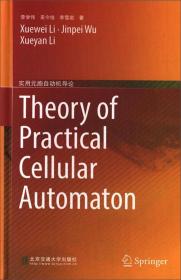
实用元胞自动机导论(英文版)
¥ 41.3 2.6折 ¥ 156 全新
仅1件
河北保定
认证卖家担保交易快速发货售后保障
作者李学伟、吴今培、李雪岩 著
出版社北京交通大学出版社
出版时间2018-12
版次1
装帧精装
货号9787512137899
上书时间2024-10-22
- 在售商品 暂无
- 平均发货时间 26小时
- 好评率 暂无
- 最新上架
商品详情
- 品相描述:全新
图书标准信息
- 作者 李学伟、吴今培、李雪岩 著
- 出版社 北京交通大学出版社
- 出版时间 2018-12
- 版次 1
- ISBN 9787512137899
- 定价 156.00元
- 装帧 精装
- 开本 16开
- 纸张 胶版纸
- 页数 352页
- 字数 352千字
- 正文语种 英语
- 【内容简介】
-
元胞自动机运用简单的、局部规则的、离散的、自下而上的建模方法,借助计算机可以把系统中各个因素之间的非线性关系转化为可执行的程序,去模拟复杂的、全局的、连续的系统。所以,元胞自动机目前已成为研究动态复杂系统的有效手段,在越来越广泛的学科领域内获得应用。
《实用元胞自动机导论(英文版)》首先系统地阐释元胞自动机的思想基础、工作原理、建模方法及复杂性分析,然后探讨元胞自动机与遗传算法、神经网络、智能体Agent的沟通、交互和渗透,最后介绍元胞自动机在经济、城市交通管理和疾病传播领域的典型应用。
《实用元胞自动机导论(英文版)》内容新颖,充分反映了元胞自动机跨学科、交叉性的研究思路,理论性与实用性兼顾。《实用元胞自动机导论(英文版)》可作为信息科学与工程、人工智能、系统工程、复杂性管理、经济管理、交通运输专业的高年级本科、研究生公共选修课的教材,也适合从事相关专业的师生、科研工作者参考。 - 【目录】
-
1 The Conceptual Origin of Cellular Automata
1.1 A Way of Thinking in Complexity: Complex Thinking
1.1.1 Simplicity and the Principle of Simplicity
1.1.2 Complexity and Complex Thinking
1.2 A Computing Mode Originated from Complexity——-Computation by Rules
1.2.1 The Complexity of Computation
1.2.2 Two Computational Modes for Complexity Research
1.3 A Discrete Dynamics Model Originated from Complexity——-Cellular Automata
References
2 The Working Principle of Cellular Automata
2.1 The Invention of Cellular Automata
2.2 The Definition of Cellular Automata
2.2.1 Mathematical Definition
2.2.2 Physical Definition
2.3 The Composition of Cellular Automata
2.3.1 Ceils
2.3.2 Cellular Space
2.3.3 Neighborhood
2.3.4 Rules of Evolution
2.4 Working Process of Cellular Automata
2.5 Information Processing in Cellular Automata
2.6 Basic Characteristics of Cellular Automata
2.7 Three Classical Types of Cellular Automata
2.7.1 Elementary Cellular Automata by Wolfram
2.7.2 Conway's “Game of Life”.
2.7.3 Langton's “Virtual Ants”.
2.8 The Philosophical Implications of Cellular Automata
References
3 Model Building Method of Cellular Automata
3.1 Computer Models
3.2 Models of Cellular Automata
3.2.1 The Abstractness of Cellular Automata Models
3.2.2 The Adaptability of Cellular Automata Models
3.2.3 The Serf-organization of Cellular Automata Models
3.2.4 The Configuration of a Cellular Automaton Model
3.3 The Modeling Process of Cellular Automata
3.3.1 Determining the Characteristics of the System Being Studied
3.3.2 Lattice Division of a System
3.3.3 Determining Initial States of the Cells
3.3.4 Determining the Evolution Rules of a System
3.4 Simulation of the Evolution of Investment Strategies in Stock Market
References
4 The Complexity of Cellular Automata
4.1 The Complexity in Nature and Formal Languages
4.1.1 Coarse-Grained Description and Symbol Set
4.1.2 Formal Language and Grammatical Complexity
4.1.3 Formal Languages and the Equivalence Theory of Automata
4.1.4 General-Purpose Computation of Cellular Automata and the Turing Machine
4.2 The Complexity of Cellular Automata's Evolutionary
Configuration4.2.1 The Complexity of Cellular Automata's Languages
4.2.2 Proof of the Complexity Levels of Several Types of Cellular Automata
4.3 Measurement of the Complexity of Cellular Automata
4.3.1 Entropy and Information Entropy
4.3.2 Cellular Automata and Entropy
4.3.3 The Measure of the Complexity of Cellular Automata's Evolutionary Behavior
4.4 Summary
References
5 Cellular Genetic Algorithms
5.1 Traditional Genetic Algorithms
5.1.1 Overview and Basic Ideas of Genetic Algorithms
5.1.2 The Computational Process of the Traditional Genetic Algorithm
5.1.3 The Performance and Short Comings of the Traditional Genetic Algorithm
5.1.4 Summary
5.2 Cellular Genetic Algorithm
5.2.1 Cellular Evolutionary Algorithm of the Genetic Algorithm (E-CGA)
5.2.2 Self-adaptive Cellular Genetic Algorithm (SA-CGA)
5.2.3 Self-adaptive Cellular Genetic Algorithm with Evolution Rules Added (ESA-CGA)
5.2.4 Improvement 1: Cellular Genetic Algorithm Based on the Strategy of Elite Preservation
5.2.5 Improvement 2: The Introduction of Cellular Genetic Algorithm with Self-adaptive Crossover Operator
5.2.6 Improvement 3: Three-Dimensional Cellular Genetic Algorithm
5.2.7 Summary
5.3 The Application of Self-adaptive Cellular Genetic Algorithm in a Dynamic Environment
5.3.1 Decision-Making Problems in Securities Investment
5.3.2 Raising the Question
5.3.3 Using Traditional Operational Research Method for Solution
5.3.4 Solution for Self-adaptive Cellular Genetic Algorithm
5.3.5 Summary
References
6 Cellular Neural Networks
6.1 Basic Principles of Artificial Neural Networks
6.1.1 Biological Neuron
6.1.2 Artificial Neurons
6.1.3 The Structure of Neural Network
6.1.4 The Learning Methods of Neural Network
6.1.5 The Learning Algorithm of Neural Networks
6.2 The Feasibility of the Combination of Cellular Automata and Neural Networks
6.2.1 Why the Combination?
6.2.2 Thought on Combination: “Help” and “Replace”.
6.2.3 Brief Summary
6.3 Cellular Automata Rule Mining Based on BP Neural Networks (BP-CA)
6.3.1 BP Neural Networks and Algorithm Flow
6.3.2 BP-CA Algorithm
6.3.3 Modeling Examples——Forecast Disease Transmission
6.3.4 Summary
6.4 Self-adapting Cellular Neural Network Model (SCNN)
6.4.1 Modeling Theme and Theory Base
6.4.2 Endogenous Time Series Forecasting Model
6.4.3 Exogenous Time Series Prediction Model
6.4.4 Summary6.5 Cellular Genetic Neural Network (CGNN)
6.5.1 Network Construction
6.5.2 Principles of Network Operation and Evolution Steps..
6.5.3 Computer Simulation
6.5.4 Summary
References
7 Agent-Cellular Automata
7.1 What Is an “Agent”?
7.1.1 The Concept of Agent
7.1.2 Characteristics of an Agent
7.1.3 Classification of the Structure of an Agent
7.1.4 The Internal Structure and Formal Description of Agent
7.1.5 Summary
7.2 Cellular Automata and Agent
7.2.1 Beginning from the Sergeant and the Soldiers
7.2.2 Two Sets of Rules
7.2.3 Agent-ellular Automata——Rules
7.2.4 Communication Behavior of Agent in the Cellular Space——Cooperative Search
7.2.5 Agent-ellular Automata——Interaction
7.2.6 Summary
7.3 Example of Cellular Automata and Multi-agent Modeling:Road Traffic
7.3.1 NaSch Model
7.3.2 Improvement of the NaSch Model——The Brake Lights (BL) Model
7.3.3 Summary
7.4 Example of Cellular Automata and Multi-agent Modeling—— Industrial Cluster
7.4.1 Settings of a Cellular Automaton, Agent Structure and Hierarchy
7.4.2 Evolution Rules
7.4.3 Computer Simulation
7.4.4 Summary
References
8 The Application Fields of Cellular Automata
8.1 The Application of Cellular Automata in Economic Fields
8.1.1 Cellular Automata and Evolutionary Economics
8.1.2 Examples of Cellular Automata Applications in Economic Fields
8.1.3 Characteristics of Cellular Automata Application in Economical Fields
8.1.4 The Development Direction of Cellular Automata Theory in the Field of Economics
8.1.5 Summary
8.2 The Application of Cellular Automata in City Traffic Systems
8.2.1 Analysis of City Traffic Systems Based on Cellular Automata
8.2.2 Humanistic Intersection Simulation Based on Cellular Automata
8.2.3 The Application of Cellular Automata in Calculating Urban Traffic Jam Costs
8.2.4 Summary
8.3 The Application of Cellular Automata in the Study of the Disease Spreading Process
8.3.1 Assumptions
8.3.2 The Evolution Rules of the Cellular Automata
8.3.3 Simulation of the Spreading of Diseases in a Cellular Space
8.3.4 Summary
References
9 Concluding Remarks——-Looking to the Future
9.1 Rule Based Modeling of Complex Systems9.1.1 The Combination of Modeling Methods of Bottom-Up and Top-Down
9.1.2 Complex Problems and Simple Rules
9.2 Cellular Automata's Rule Mining
9.2.1 Rule Mining Based on Local Evolutionary Phenomena..
9.2.2 Rule Mining Based on Intelligent Algorithms
9.3 Cellular Automata's Emergence Computing
9.3.1 The Connotation of Emergence
9.3.2 Emergence Computation
9.4 Future Outlook
References
点击展开
点击收起
— 没有更多了 —


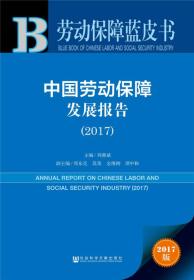
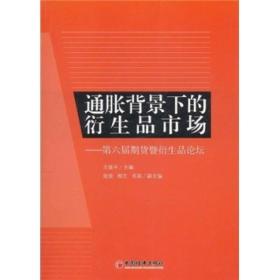
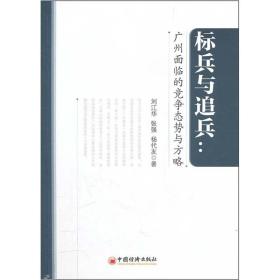

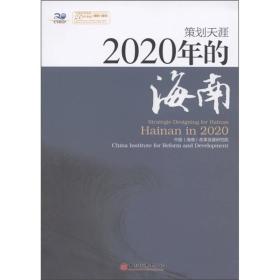
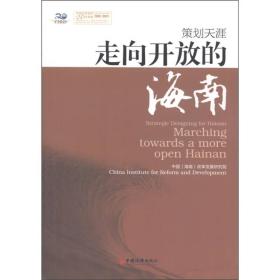
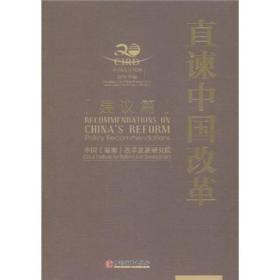
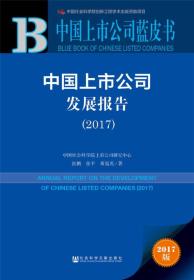
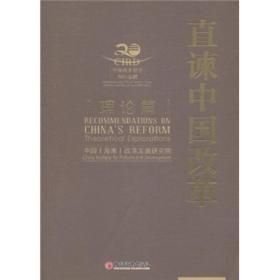

以下为对购买帮助不大的评价